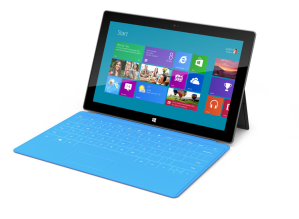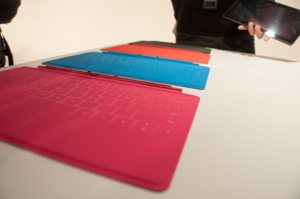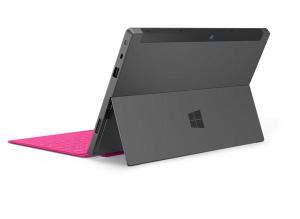I have read a lot of great things about Windows 8 and a lot of negative things about it too. It seems that Windows 8 has polarized opinion across the media, and this really is shown on blogging sites such as ZDNet and Business Insider. I have noticed with Windows 8 that there are two types of bloggers, those that want to use it, feel it, see what’s actually new and think of it as a new piece of software at beta release (which it is), and those who simply are looking for any reason to say why it will fail and why Windows 8 is the next Vista, or why we should all use an iPad for business or something….What is weird, as yet, I haven’t read a blog that really skews its slant in a biased way towards windows 8 (must be the sign of the times).
So like many things in life, there is no point listening or reading so called journos on such matters (just as I rarely listen to film critics), you simply have to use it, and spend some time with it. So when the CP of Windows 8 was released at the end of February I thought it was time to install it on my work machine and see what it really is made of…
By the way, I am writing this on my Windows 8 machine, using Metro IE 10, which I have to say is the nicest browser experience I have used on any form of device, be that mobile, tablet, laptop or desktop…I really like it….

Windows 8 Metro Start Screen
Touch
OK, many blogs say Windows 8 is far too focused on touch, and it neglects the desktop and the good old days of mouse and keyboard. This may seem true, when you read the blogs and see some screen shots, but actually use it for a few days (in my case in a hard work environment) and you soon realise that actually, Metro works just as well with a mouse and keyboard. Sure it’s nicer with touch, but everything is nicer with touch, far more intuitive and even dare I say still novel.
What we must all remember is that touch is the future, and that includes the desktop and laptop worlds. Already we see many PCs with touch monitors, and if you have used them, you find their experience is better than standard PCs without it (even running Windows 7). By the start of 2013 I wouldn’t be surprised if most new PCs came with a touch screen option. Windows 8 is a new UI for the next 10 years for Microsoft, and touch has to be at the centre of it, like it or not. If you are one of those people who still want to use a mouse and keyboard, that’s fine too, but don’t knock an OS for supporting what will be the mass market shortly.
Clashing Metro and Desktop
Clashing user interfaces is something that is also being thrown at Windows 8 at lot, people claiming that its “jarring” moving from the metro world to the desktop. I really think this is looking for faults for the sake of looking for faults. I have 3 monitors and 2 of which are in desktop mode, the third Metro, and to be honest I don’t find the experience jarring at all. Sure they look and behave differently but so do many programs you run. Currently with any OS, you have a few windows open and the experience between those windows is just as “jarring” as there is no standard design for apps.
I really don’t find a clash, especially if you stop seeing them as different user interfaces, and see them for what they are. Metro home screen is the start button, just full screen. When you run multiple monitors it’s really nice having the metro side of things on a screen on its own, it works really well. I also have the option to ditch it and go full desktop. We have to realise that metro is start, and metro apps are immersive experiences, designed yes for touch and tablets, but work just as well on the desktop. The Maps App for example means I will never use Google maps or any maps in a browser again! It is a brilliant experience on a desktop machine.
When you run multiple monitors you find that probably on one of them you will have one window open to the full screen, typically for me this will be Outlook, and the other monitor may have VS 2010 open full screen and the third lots of multiple windows open, depending on what I am doing. So the concept of full screen apps in metro fits in nicely with multiple monitors I find. If on a single monitor, if you want to have two windows open at once, you can with Metro, nothing stops you, just that the apps run side by side (a feature many of us use in Windows 7 to snap windows side by side). Not many of us have multiple windows open so we are viewing them all the time, we have multiple windows open so we can work with them, but to actually view them no, we switch between windows. I think the alt tab is the most used key, and with Metro this doesn’t change, nothing is stopping you from opening many many apps…
Mystery in using the Metro UI
With anything new, comes new ways of doing things. Many have written that you have to “re-learn” the Metro world, and know where to hover your mouse etc. This is sort of true, sure you have new areas or zones where you hover your mouse and new things happen, but that is “added” to your windows experience, and if you can’t remember to move your mouse to one of four corners to activate something then you really won’t even remember why you are on the PC in the first place.
There are new things to learn, for example start button is gone, but metro home is start, you access “charms menu” by hovering the mouse in the bottom right, or top right hand corner of the screen, sure its new but now you know, it’s pretty easy to remember. If anything its very intuitive once you give it a chance. My Dad who is approaching his 70s is always scared of a new OS coming from Windows as he is still in XP mode, but after 10 mins with Windows 8 he was more than happy with it.
Once you get used to some of the new ways of doing things, you soon find that these are standardised across everything in Windows, which makes life so so so much simpler. Think about changing settings in your browser, or an app, often we end up looking through menus to find where they are (not always in the most obvious place). You then go to a different application and you want to change those settings and yeap, you spend ages looking for them in that app as they are not in the same place. With Windows 8 all that is gone, just go to the charms menu, and there they are, settings…No matter what app you are in.
Oh, and don’t forget, Metro is for all your devices, phone, tablet, laptop, desktop….

Nokia Lumia 800 showing its Windows Metro Interface. Metro across all your devices makes life simple
Default classic desktop
So you boot up and you are greeted with Metro, some saying they want to be greeted by the classic desktop and bypass metro, but I really don’t see why. Once in the desktop, what will you do, you will look to open an application. So why didn’t you simply open the application from the metro start screen? If it’s a desktop app, it fires and you are in desktop mode? Booting into desktop, and then clicking on start, then programs, then selecting your application of choice is far more time consuming than selecting it from the metro start screen. Plus, in desktop mode, do I have live tiles telling me information I may need?
Metro doesn’t work for everything
Ahh this is true, and this is the point of Windows 8 in some ways. You have one OS for all your devices, so just as typical Windows desktop apps don’t work well for mobile devices, certain metro design concepts won’t work for certain applications. I doubt there will be a VS 2012 in Metro, or a Photoshop metro app. You simply need the accuracy of a mouse, you need the text based menus with all your options, so traditional desktop interface works well. With Windows 8 you get the best of both worlds, and more to the point the flexibility. I want to be able to do “everything” on my chosen device, and with Windows 8 I have that flexibility. It maybe that I have a metro version of outlook or mail open, but then need to work with Photoshop; I have the freedom within the OS to work as efficiently as possible in both environments. Can you say that with any other OS across any or should I say all of your devices?
I personally am glad metro doesn’t suit everything. If it did, think of those entire legacy apps people would be trying to re-write…They won’t will they, and the desktop works well for those apps, so why re-invent the wheel for something that isn’t broken.
Kinect Support missing
This made me laugh out loud; that someone has complained about this is mad! Windows 8 is a beta / consumer preview edition; it’s not a finished OS. Likewise do we have Kinect Support on all other operating systems…erm, no. I’m sure it will be there come the end of 2012, and in many ways you can argue it is there already. Since the desktop world supports legacy apps, it will no doubt support the current Kinect drivers, API etc available for Windows 7.
Live tiles ….
I think you either love these or hate the look of them. I personally love the practicality they bring. With my Metro start screen I see so much information without doing anything other than look at the screen. I have noticed I do the same with my Windows phone, no longer do I flit between multiple apps for quick updates, and I simple look at the screen and the various tiles. In many ways, Live tiles are great from productivity and making sure you are aware of what’s going on…
I think if you hate the look of them, you haven’t actually spent any time with them. If you have, the blocky nature makes things easy and clear to see, and the fact they are actually live, constantly moving and updating you with information is great. Many have said that they will look messy once you get different apps and graphics being used, I have to disagree, if anything the tiles look more vibrant. I think the tiles look more standardised, even with lots of different apps and graphics being shown than a sea of icons which I used to have (be that on my phone or desktop). Moving back to the old icon world really does feel like a step back in time now, and I think that will be many people’s thoughts once they spend a little time with Metro and live tiles.
Business adoption will be slow
This may be true, but not because Windows 8 is something they don’t like, rather because the Enterprise update in cycles, and this usually means an update ever 2 versions of Windows in recent years. Most companies went from Win 95 to Windows XP. I don’t recall anyone opting for Windows 98. On the server side we went NT 4 to 2000. Roll forward and enterprise moved from XP to Windows 7 and server side from 2000 to 2005/8. It’s not because the other versions of Windows were cra* rather the releases didn’t fit in with the Enterprises upgrade timescales. I think Windows 8 is being released so soon after 7 so that it does miss the Enterprise upgrade path on purpose. This means by the time Windows 9 is being released; everyone will be happy with the Metro concept and be very eager to move to Windows 9 in the enterprise.
Sure in the tablet scene, many businesses will opt for Windows 8 tablets, especially with support for legacy apps. I read in one blog though that because windows 8 on ARM won’t support these legacy apps that business will turn to the iPad….You see the sort of rubbish that gets written? Why would any business chose an iPad in such a case? The iPad also won’t run your legacy apps, so I think the business will opt for Windows tablets on Intel chips and sacrifice the added 2 hours of battery life (so that’s 10 down from 12 looking at the battery span of the Windows 8 Developers Preview tablet).
Gamble…
Is Windows 8 a gamble…Yes, but is it a massive one, no not really. If you hate metro, you will live in the desktop mode. If like me you like to move forward, and you are prepared to spend more than 5 minutes judging a book by its cover, then you will soon like Metro and everything it stands for, and that will include the Metro start screen and “apps” in Windows 8…
I think Microsoft have got it right with Windows 8, and we have seen some real innovation finally from a desktop OS.







Recent Comments